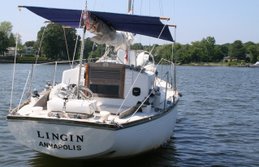This has hurt us many times in races, and I think it’s an advantage that C.B. and Towney have on us. They simply have some seasoned veterans on board that give them a leg up.
Now, while I may have the most racing experience on board, I would prefer to remain driver and not strategist. Two reasons:
- Driving an Alberg takes finesse that develops over time. I have a lot of Alberg helm time, and I enjoy that advantage!
- I really like driving. It’s a thrill to me, and while I like strategy, on the whole I like driving more.
I am confident that we can develop our team into solid strategists. To that end, I’d like to create lots of communication about strategy—both pre and post race. I also think the “LinGin Book Club” could be a great place to make this happen.

